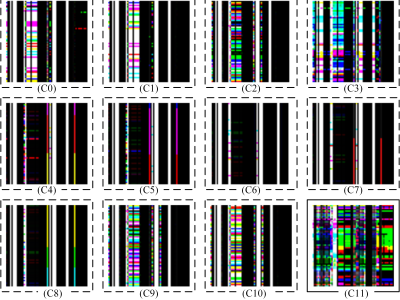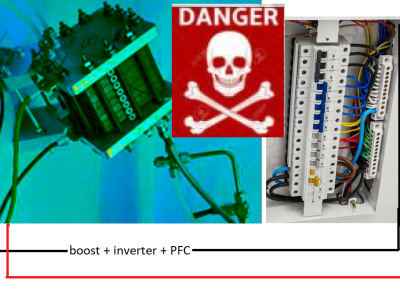Abstract
Smart Grids (SG) are a novel paradigm introduced for optimizing the management of the power generation, transmission, distribution and consumption. A SG system can efficiently work only if all the components are connected through a communication network able to satisfy the SG applications requirements. Wireless communications are the most appropriate candidates for handling SG requirements due to their flexibility. By gaining from the presence of several Radio Access Technologies (RATs) and different SG applications, a Cost Function (CF) approach is here proposed based on both communication and energy consumption aspects for optimizing the SG nodes assignment to the different RATs. The proposed method allows to optimize the SG node allocation by exploiting the variable spatial densities of the nodes. The numerical results are achieved by using MATLAB simulations.
Instructions:
The conventional power grids are becoming less attractive mainly due to their reduced energy efficiency. Smart Grids (SG) introduce a novel power system paradigm aiming at managing power generation, transmission, distribution and consumption in an efficient way. In order to work properly, SGs require a tightly coupled communication infrastructure allowing a bidirectional information flow between the power grid devices (i.e., the SG nodes) and an operational center. Bidirectional communications allow lowering energy consumption and outages thanks to a smarter power distribution management. SGs are introduced to accomplish these goals [1],[2].
SG systems are composed by different types of nodes, having different communication requirements and functions. The nodes types should exchange command, controlling and demand response messages among them and with a centralized operational center. For pursuing the message exchange, it is possible to gain from several different communication technologies. Among other, wireless technologies allow to deploy the system in a much more efficient way by exploiting the wireless communication flexibility [1]. However, there are several potential Radio Access Technologies (RATs) with different communication configurations and characteristics able to cope with the SG communication requirements [2]. On the other hand, radio spectrum is becoming a scarce resource due to its exponentially increasing demand [3][4], thus, resource allocation for supporting different SG node types should be optimized while respecting the SG node types communication requirements.
The node allocation in heterogeneous networks is a long-standing problem considered in the literature. In [5] the authors consider a round robin approach for load balancing where the communication traffic is evenly distributed among all the available base stations, regardless of existing load and performance issues. However, the proposed approach does not consider RATs characteristics, SG node communication requirements and densities, resulting in designing an inefficient heterogeneous network. The distance is the only parameter used to balance the network traffic. Another load balancing method is called Predictive Nodes Method in which all the available base stations are observed over time and the trends are analyzed [6]. The load balance is performed in a way that the traffic is assigned to the base stations that have the best performance in terms of delay, data rate and energy efficiency. Moreover, this approach requires a cognitive process during the observing period for sensing and finding the results with a higher delay [7]. In [8] the suitability of different RATs deployment for different SG applications is assessed by considering the enterprise level, generation, transmission and distribution levels, to the end customer level. Data rates and coverage ranges of wireless communication technologies were compared. An assessment is performed to evaluate the different communication technologies for enabling different smart grid applications based on specific network requirements. Usually, optical fibers, xDSL, coaxial cable, and powerline communications are considered as wired solutions and ZigBee, wireless mesh, WLAN, Z-Wave, WiMAX, cellular, and satellite as wireless solutions.
Our idea is instead based on defining a suitable Cost Function (CF) able to model the different system requirements, so that its minimization allows to efficiently allocate the node types to the different RATs. Differently from other approaches where only a partial view of the system has been considered, we are here proposing a suitable mapping method allowing to quantitatively measure different qualitative requirements and map them over a scalar function that can be easily managed. Moreover, the proposed CF is composed by two parts, namely the Communication CF (CCF) and the Energy CF (ECF) in order to consider both communication and energy issues when optimizing the nodes allocation.
The CCF is defined through the Key Performance Indicators (KPIs) of the SG node communication requirements and RAT communication characteristics. Four different KPIs have been considered, i.e., data rate, delay, complexity and security, modeled by using several parameters, including modulation order and spectral efficiency, network latency, encryption method, packet loss probability. A suitable value-based mapping of qualitative-based functions is introduced. This approach allows to achieve a quantitative measurement of the suitability of the considered RATs when operating in a heterogenous SG nodes scenario. The SG node density has been also considered as an input when measuring the different parameters. The CCF allows to maximize the appropriateness between the RATs features and the nodes communication requirements [2][9]. At the same time, a proper ECF is defined for giving importance to the energy consumption issues of the different RATs during the communications [10],[11].
In this paper different SG node types with different communication requirements are considered. Moreover, the effect of the SG node types densities in radio resource allocation, is discussed. Five different RATs (i.e., GSM, LTE – for the terrestrial links – and Low Earth Orbit (LEO), Medium Earth Orbit (MEO) and Geostationary Earth Orbit (GEO) – for the satellite links) are considered. The results show the effects of the CF based allocation with different densities of the SG node types. The assessments performed in this study are useful for selecting appropriate RATs for different SG node types scenarios. In this work, 16 different SG node types and the related communication requirements are introduced. Moreover, three different scenarios with different areas and node densities are considered. The comparison among them is performed when optimizing the nodes allocation among the different RATs.
The following of the paper is structured in this way. In Section II the SG node types and their communication requirements and data collecting methods are introduced. In Section III the CCF, the ECF are introduced, as well as the proposed node assigning method. In Sections IV and V, the numerical results and conclusions are given, respectively.

 143 views
143 views







